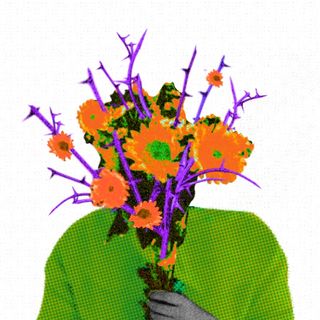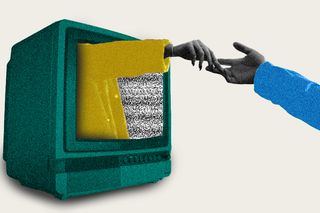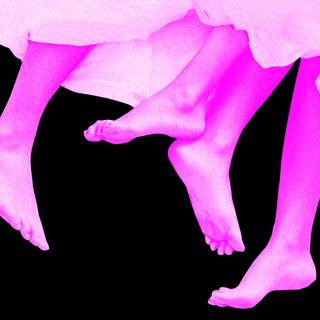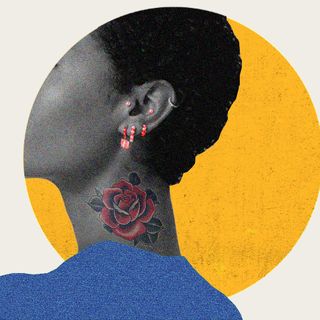
Parasocial Relationships With TV Characters Linked to Viewers’ Personality Traits, Study Shows
“When identification with a character is particularly strong, a viewer may even develop values, beliefs, and personality traits that align with those of the character.”

A few weeks ago, as Johnny Depp — previously found guilty of domestic violence — took his ex-wife to court for defamation, social media crowded with minute-by-minute analyses and commentaries of the trial. Fans of the star, seeing the actor as just an extension of the adored characters he has played onscreen, keenly followed every second of the proceedings. When the verdict was finally announced they were visibly jubilant across platforms. The fans’ deep, mostly one-sided attachment with the star and his characters, is among the many recent examples of parasocial relationships — the phenomenon of viewers and listeners of mass media considering media personalities as their friends, despite having little to no interaction with them.
A new study now puts this phenomenon into perspective and may help us understand the magnitude of it. Claiming that such relationships may be strongly connected to consumers’ own personality traits, Erica C. Rarity and colleagues’ study, published this month in Psychology of Popular Media, observed that people often endorsed and adapted personality traits of the characters they most identified with. “The more someone is involved with the fandom, the more closely connected they will feel to the parasocial entity around which that fandom is centered,” Rarity explained. “These feelings of closeness translate to the feeling that the characters and stories are more meaningful. When identification with a character is particularly strong, a viewer may even develop values, beliefs, and personality traits that align with those of the character,” Rarity added. For their study, the authors surveyed 829 viewers, of My Little Pony: Friendship is Magic, an animated Netflix iteration of an eponymous toy line developed by Hasbro. The survey was primarily carried out via a fan website and the social media platform Discord.
The six main characters of My Little Pony each embody one of six positive personality traits: humor, honesty, generosity, loyalty, friendship, and kindness. Participants in the survey were asked to measure each of the six characters by how much they identified with them and their corresponding personality traits. On evaluation, researchers found that people who identified the most with a character often also identified most with the presence of that character’s defining personality trait in their own psyche. In other words, fans of a given character were most likely to also embody their key attribute. Rarity noted that “these findings support the possibility that, at least for parasocial relationships that occupy an important role in people’s lives, identification with characters might influence either personality traits or self-perception of those traits.”
The authors of the study also identified some limitations in their research. Chief among these was the correlational nature of the study: In other words, researchers showed only a correlation, not causation, in the link between the consumption of fiction and corresponding changes in someone’s personality traits. People who already strongly display some traits may naturally seek consumption of content where characters embody such traits. Nonetheless, the study helps us explain why viewers and listeners may be attracted to form parasocial relationships with particular characters.
Related on TheSwaddle:
Is This Normal? “I Imagine Friendships With Fictional Characters”
Parasocial relationships have been a subject of research in media studies, psychology, and sociology since 1956, when the term was first used by Donald Horton and Richard Wohl in a paper that looked into this unique interaction between mass media and its consumers. Although such interactions crystalized in the age of mass media, some researchers claim that it was the ancient Egyptians who exhibited the earliest instances of obsessive and devoted one-sided connections with celebrity figures. In the pre-mass media age, parasocial relationships were forged by followers of politicians, kings, and even gods. In the contemporary age, K-Pop fan culture is known for being among the most intense instances of such interactions.
The present study builds on recent work on the phenomenon, which suggested that one’s attachment style may influence how they interact with characters from television and other fictional mediums. The one-sided nature of parasocial relationships can often be comforting, even attractive, for those who engage in these interactions. Stories enable us to be intimately close with others without any risk of rejection, and that can be a refreshing pause from the stress produced inevitably in anxious and avoidant coping strategies. Those who evaded everyday life relationships (attachment avoidance) tended to substitute them with parasocial ones, and those with attachment anxiety were more likely to form parasocial relationships with fictional characters.
The 2022 Batman movie offers a good illustration of how people may be driven to extremities in their parasocial engagement with their idol. The film’s primary antagonist, The Riddler, has an Instagram following that many have widely interpreted as consisting of incels. Through the course of the plot, he influences them into carrying out a terrorist attack even when he himself is arrested. The use of toxic fan-culture as a plot point in a Batman film is particularly interesting as nemeses of the comic-book character have often inspired real-life violence, such as a mass shooter adapting Bane’s appearance in an earlier film’s premiere, and a renewed rise of inceldom in the aftermath of 2019’s Joker.
The confluence of capitalism and mass media has ensured that preexisting parasocial connections have been monetized through theme parks and official merchandise. At times, fans themselves have vehemently defended the increased franchise-factory model of output that these media houses have engaged in, questioning even workers and artists on their valid complaints and criticisms of such kind of a model. Cosplays, toxic fan-wars mediating how many engage with fandom, and cults revolving around ultra-specific behaviours and attributes of remarkable characters, are among the myriad ways in which parasocial interactions operate in the world today. The study, then, comes at a time when parasocial relationships have become one of the dominant forms of how we engage with media — and why we need to pay more attention to them.
Amlan Sarkar is a staff writer at TheSwaddle. He writes about the intersection between pop culture and politics. You can reach him on Instagram @amlansarkr.
Related


Porn Use Can Make Women Feel Confident in Bed, but It Negatively Impacts Men’s Performance: Study
